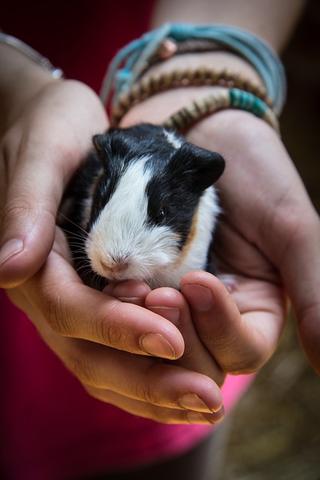
Keeping a pet in the classroom is a great way to teach children how to respect and care for animals. It’s no slight responsibility, however, and teachers should take care to set strict boundaries and protect the animal from being mistreated, over-handled, or left without supervision.
The ASPCA says that a classroom pet’s environment “should be non-stressful and should meet the needs of the species being kept… Handling should be minimized and carefully supervised by an adult.”
Check out our blog post listing our top five classroom pet suggestions!
Pet checklist
Classroom pets are animals that deserve our utmost consideration and respect. These animals should receive the same level of care and attention as our beloved household pets, such as:
-
Large home/cage (with secure lid)
- Build the pet a species appropriate habitat with bedding and hideaways
- Keep the cage consistently clean
- Healthy, fresh food fed in appropriate amounts (be sure to seal the food so it doesn’t become stale!)
- Clean water (refilled every day)
- Ways to exercise
- Toys to play with
- Positive social interaction
- Basic veterinary care and parasite control
- Veterinary care when ill or injured
- Sterilization (for some animals)
- Designated hiding spots are essential for the animal’s mental health!

Care considerations
- Keep the pet in a quiet, low-traffic location
Animals become stressed in noisy, busy environments. To put them at ease and increase the chance that they will interact with people, keep them in a quiet, low traffic spot that is also free of drafts and direct sunlight. - Keep the pet safe
Keep the pet out of reach of children, and never leave the room unattended when children are present. Set strict rules for how children may interact with the animal through the cage, such as not banging on the glass or scaring the animal in any way. - Handling & attention
Make sure your students wash their hands before and after handling the pet, and only let one child handle the pet at a time, without other children crowding around. Pet handling should be directly supervised and should always be a gentle and positive experience for the animal. Even accidental rough handling can cause a normally friendly animal to become timid, afraid, or injured.
- Weekend care
Accommodations should be made to care for the pet over the weekends.
-
School breaks
The animal should be taken home and cared for by a responsible adult for the duration of school breaks.
For the many children who adore animals, having a pet in the classroom is something they’ll look forward to each day. And for those children who don’t have pets at home or haven’t been taught to respect and care for animals, teaching this important, valuable lesson is one of the greatest lessons you can ever give them!



